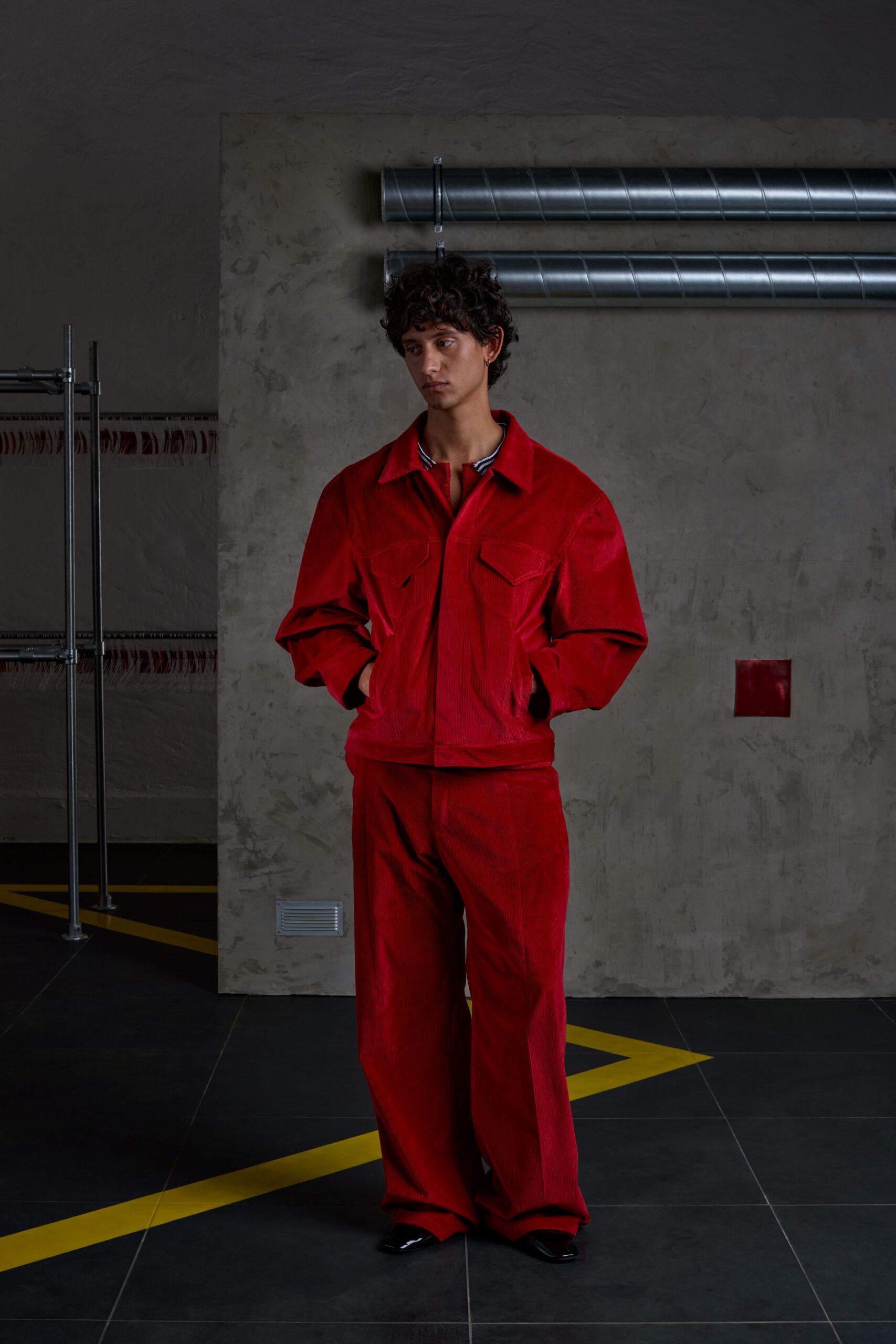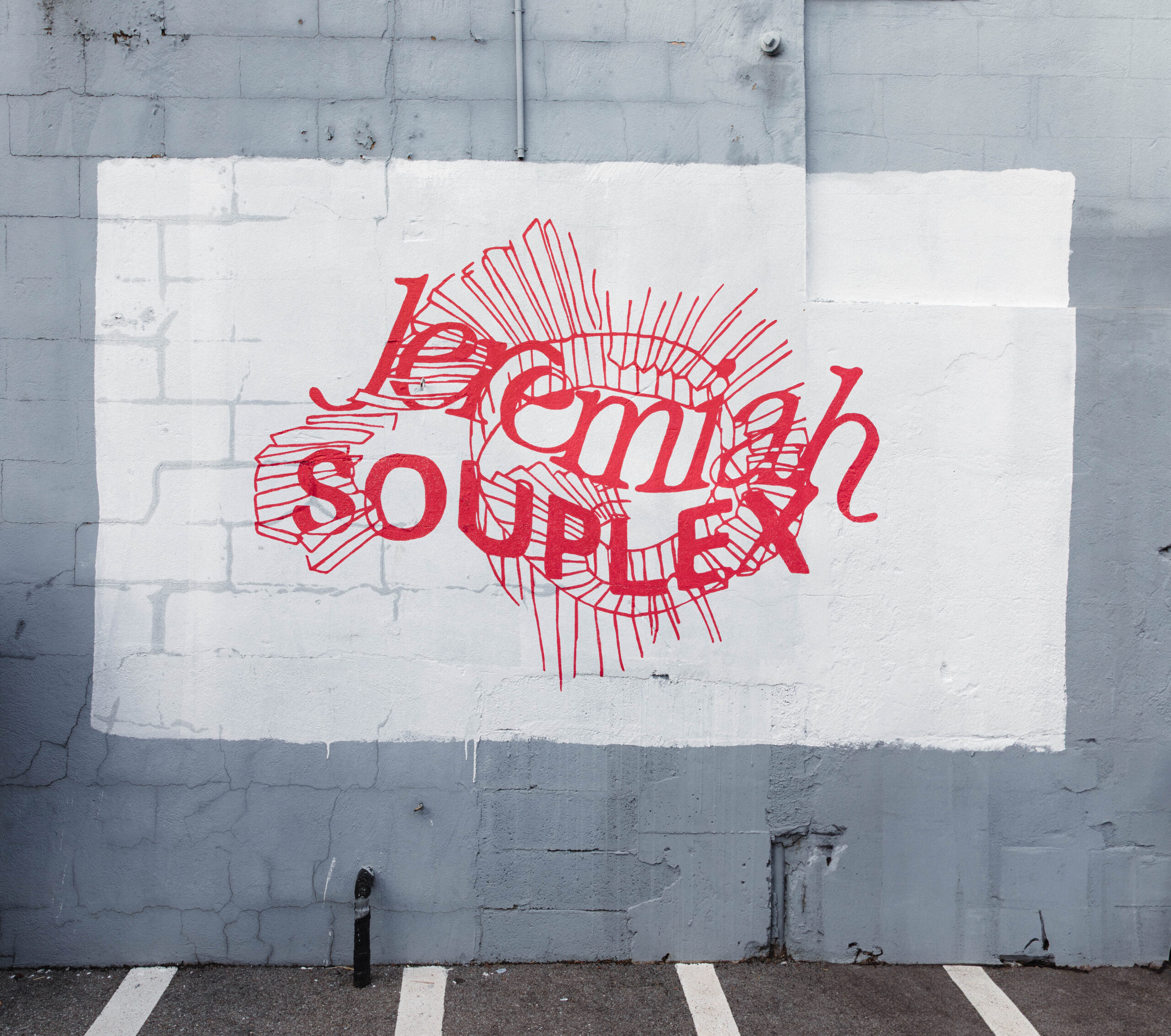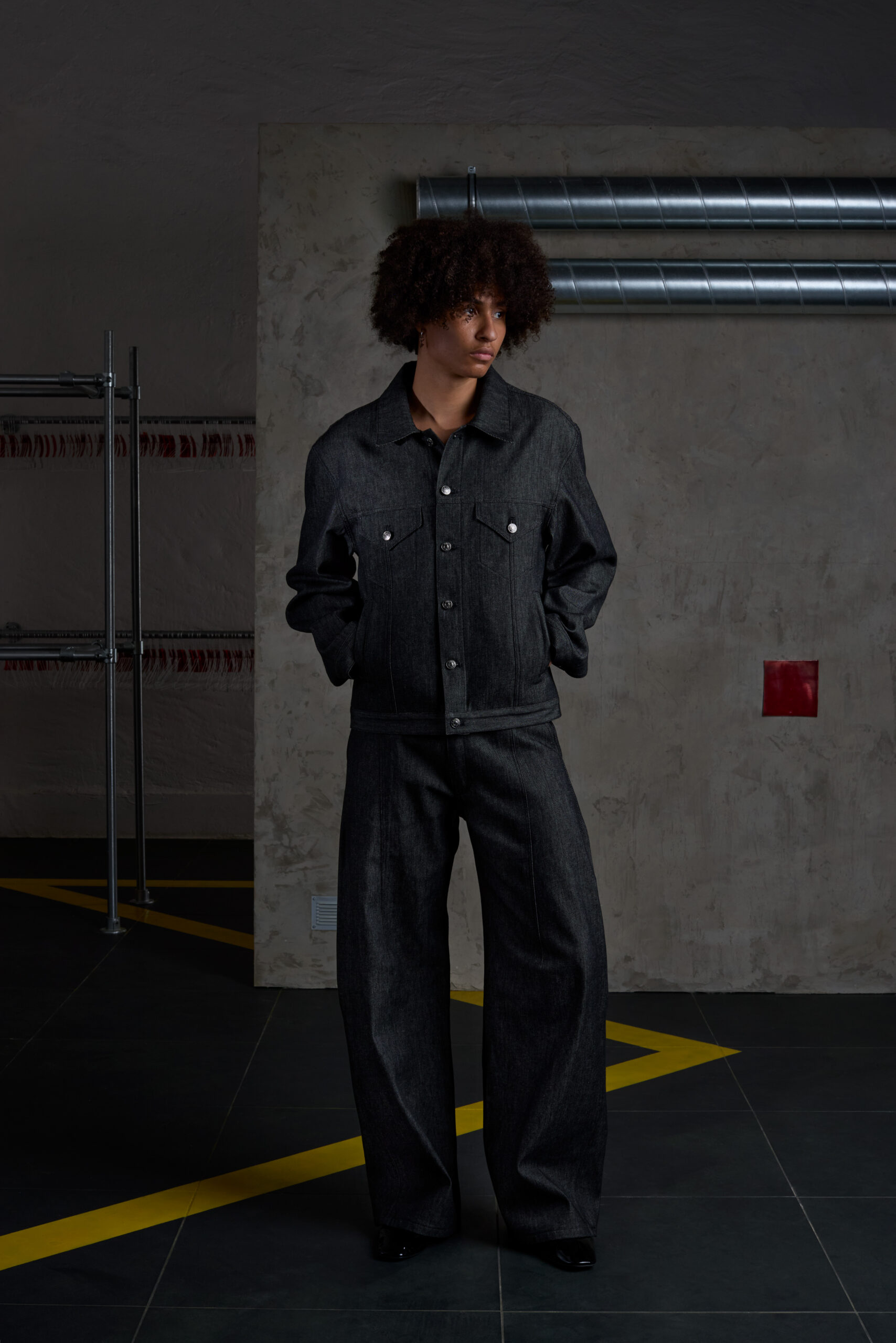“An ode to the slow and gentle process of growth”

Pursuing maturity, yet holding dear the unburdened spirit of youth, Jeremiah’s Teenage Business collection emerges as a tender and sincere homage to this uncertain phase of life. Jeremy Currat, a young designer from Geneva, immerses us in the world of Jeremiah—a fictional young man, awkward and in search of his identity—through tote bags that playfully mocks serious briefcases and bowtie hoodies. Upon arriving at the shoot location, I was greeted by the man himself, it became immediately clear how deeply passion and devotion shape his work. His tireless involvement in every detail, from carrying heavy set pieces to dashing in search of the right accessories. Hangers with numbered tags and clothes gathered in a corner reminiscent of a nightclub dressing room sum up the poetic universe crafted in collaboration with Atelier Souplex (Tanguy Troubat and Vincent Grange). Opting out of the more conventional route of a runway show, Jeremy favours a community-oriented approach by introducing his collection in the form of an exhibition.
This atmosphere, filled with nostalgia and delicacy, takes inspiration from l’esprit de l’escalier (literally, “staircase wit”), a French term describing the predicament of thinking of the perfect reply too late. The display evokes moments when the young man mentally revisits past job interviews, half-hearted handshakes, and the inevitable spiral of self-doubt followed by the dreaded “we’ll be in touch.” Join our conversation with Jeremy as we delve into his Teenage Business collection, his time at Louis Vuitton, and a whole lot of Geneva (!!!).

Hi Jeremy! First of all congrats on the exhibition! Could you tell us a bit more about what inspired the collection?
Thank you appreciate it! “Teenage Business” begins at that moment when the big questions about your future slowly become overwhelming. My idea was to create a wardrobe that allows you to keep identifying with your youth, and adolescence while starting to meet some of the adult dressing norms. The collection borrows from several wardrobes like the fathers, grandfathers and the mothers too in some pieces like the fluffy coat. From the father’s side, it’s mostly the very formal shirts, and the cuts that come through. I also wanted to add a touch of youth and nonchalance by adding a hoodie and a t-shirt. These two pieces are awkwardly chic and bring a softer side to items like a tie. These clothes highlight the tension of this transitional point in time, that I’m going through and many others around me too, stuck between the skater tee and the blazer. Creating a middle ground is where I have fun designing.
I can honestly relate to that so much! Taking a little leap into the past, I saw you were previously at Louis Vuitton, what was that experience like?
I started as an intern there, right after doing my bachelor’s in fashion design and then later I was hired. That period of time really served as a creative lab for me to develop my brand. Once I received the funds I needed to launch my project I left Paris and came back to Geneva to do my master’s. I also worked at Hermès for a bit, and these experiences truly allowed me to experiment and observe how the professional world operates. At school, you learn all about the creative side, but there’s a whole business aspect to it which was cool to learn there.
Wasn’t there also the meme-ification of the Skyscraper Puffers going on at that time, the ones by Virgil Abloh, what was that like?
Yeah, it was really fun! The skyscraper puffers kind of broke the internet. I worked on them under Timothy Bouyez’s supervision, a designer at Vuitton, and I really enjoyed that whole process. At Vuitton, the focus was mainly on showroom items, which I appreciated, even though my personal interest lies more in wearable clothing for everyday life. As for Virgil, it was cool working alongside him. While he wasn’t always around, as a creative director, he spoke to me a lot from the start as a creative which is one of the reasons I wanted to go to Vuitton in the first place. He was very inspiring, especially in bringing storytelling into fashion, from the construction of the clothes to how they were showcased in shoots, exhibitions, and on the runway. It was truly a pleasure to work there.


His legacy is incredible and it all sounds so dreamy. Speaking of the past I wanted to ask about your first collection Slow Hot Wind, could that be a reference to Tyler, the Creator’s “Hot Wind Blows”?
Yes, there is a reference to Tyler, the Creator. That same summer, the song blew up because he filmed his music video in Geneva. That lined up with my aim to create my brand in Geneva and keep it in there. The creative process for that collection took a lot from the idea of sampling in music, where I decided to reuse something that already exists and twist it. So, “Hot Wind Blows” is Tyler’s song, but the original sound is a sample of “Slow Hot Wind,” a jazz and soul track from the ’70s. I like nodding to my youth, but also to my parent’s youth and making references to what they wore when they were younger, generally mixing different eras. I thought it was also interesting to apply this sampling method to the details of the collection. In the intro to the song, Tyler starts with “We just landed in Geneva, yeah, that’s in Switzerland,” and on the buttons, I put “Jeremiah, that’s in Switzerland”. It was an album I listened to a lot at the time, so it felt perfect to tap into that.
I also had it on loop haha! Would you say there are influences from the city of Geneva in your work?
You can see it in the nightclub-inspired set design accompanying the collection. It’s because I go out a lot to clubs, especially La Gravière.
Do you have a top 3 for clubs in Geneva?
It’s La Gravière only, la Gravière on Thursdays, la Gravière on Saturdays. When I was in London, I went out to bars and pubs, but not necessarily clubs. The nightlife is something I particularly like in Geneva. It has something that I haven’t been able to find anywhere else. Even though it’s not a city known for its partying, there’s an atmosphere that I really enjoy here. There’s also this idea of formalwear in Geneva since it’s essentially a banker’s city. You see shirts every day, but I wanted to highlight the youthfulness you also find in Geneva. I like the ambition I see in the people I’m working with—my models, Miles, Takumi, and Garis— are really moving things around by organising events and such. I was born and raised in Geneva, it’s my city and I to keep that element in my work.

I couldn’t agree more. You are also moving things around with this event, I wanted to ask how the idea of doing an exhibition came to you, since you’ve already had experiences with doing fashion shows?
There’s something about a fashion show where the garment is perceived more as a vibe or as a movement rather than something more precise. It passes by so quickly, and as an audience, you get a sense of the look, the attitude, and the style, but you don’t have time to examine the actual garment. It’s distant, and only a few journalists get the chance to talk to the team, which is nice, but that’s about it. The idea of creating an exhibition, particularly in Geneva, felt beautiful to me. It was about meeting people, engaging with them, and emphasising the social aspect. It gave them the chance to focus on the details, like the buttons, and really appreciate the craftsmanship.
The social element was just as important—having a DJ set, a bar, a space where people could meet, have a drink, look at the clothes, chat with each other, and with me. It allowed me to get real-time feedback on the collection. There were pieces, like the red jacket, that I didn’t expect to do so well, but after seeing how people responded, I’m now considering whether it could go into production. It became a live market study, in a way. It was an opportunity to celebrate with people without the exclusivity aspect—creating something more intimate, social, and accessible.


It’s so true that fashion shows are often fleeting moments, where the garments are more about energy than detail. I’m really intrigued to hear more! It sounds like there’s so much more to come. How are you envisioning the next step in your creative journey after Slow Hot Wind and Teenage Business?
There might be a sequel, but I don’t have it yet. I just know that I like the idea of firsts, the hesitation, the awkwardness that comes from trying something for the first time in a social situation we’re not used to being in. I think there are still lots of firsts for me to explore and there will be many new ways to push this character. I’m gradually becoming more certain about what I want to design, and how I want to express it. Last year was more about gimmicks and accessories, but now I’m addressing this youth with more precise details. One thing is clear my work will always involve some storytelling.
Love that! Can’t wait to see how it unfolds! Thank you so much!
It’s my pleasure, thank you honestly!
Words & translation by Veronica Tlapanco Szabó
Images by Philomène Lacroix
Styled by Agnès Eve
Modelled by Miles Barela, Takumi Tsukada, Tobi Möller-Gosoge and Ulysse Lozano.
PS: First online drop on the 22nd of November